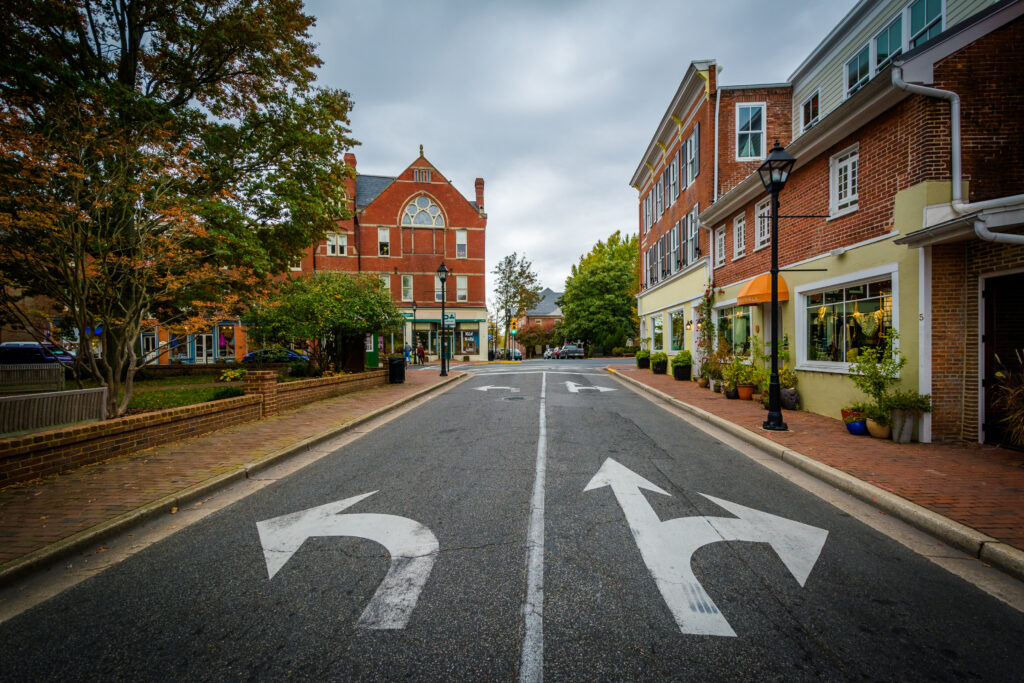Building on a Human Scale

By Owen Bailey
As a land trust, ESLC knows the value of our natural lands. For each easement we create to protect our unique rural landscape in perpetuity we calculate that value as justification for the easement and the return on that investment. But how do we calculate the value of our built environment like our towns and villages? How do we calculate the return on those investments?
The best means of calculating the value of our communities is called value per acre. In short, this method looks at the assessed property value from the state of Maryland and divides it by how many acres the parcel has. ESLC has this value per acre (VPA) data for 8 counties on the Eastern Shore, which is available for everyone. VPA highlights the value of different types of development, and by far the most valuable land use in our built environment are our historic downtowns. These high-value areas are significant because they are built to a human scale with mixed-use and walkable designs, and they help protect our rural landscape.
Building places to a human scale involves designing environments that prioritize people over cars. This means creating walkable neighborhoods with a mix of residential, commercial, and recreational spaces. Such designs not only enhance the quality of life for residents but also boost economic value and leave farmland and native habitats undisturbed. Historic downtowns, with their pedestrian-friendly streets, diverse land uses, and vibrant public spaces, exemplify these benefits and offer huge returns on investment for their towns and counties.
Investing in these traditional development patterns leads to numerous benefits, including increased property values, improved public health, and stronger community ties. For towns and counties, this translates to higher tax revenues, more sustainable economic growth, and less liability on maintaining local infrastructure like roads, water/sewer lines, and stormwater. Compact, walkable communities often require less infrastructure and maintenance costs compared to sprawling developments, leading to significant savings for local governments.
By focusing on creating spaces that cater to human needs and activities, we can build more sustainable and resilient communities. Prioritizing historical development patterns not only enhances our quality of life but also supports local economies and conservation efforts, ensuring a thriving environment for both people and wildlife.
Local leaders are encouraged to champion human-scale development in their communities. By advocating for policies and projects that prioritize walkability, mixed-use development, and vibrant public spaces, they can create environments that are economically prosperous, environmentally sustainable, and socially cohesive. Let’s work together to build places that truly support and enrich the the unique and rural landscape on the Eastern Shore.